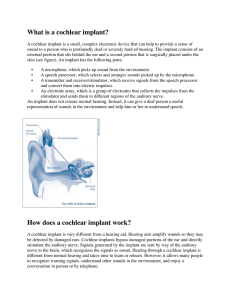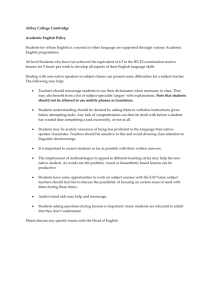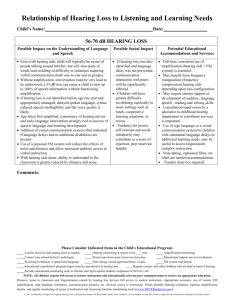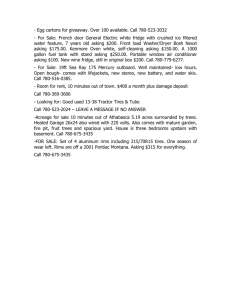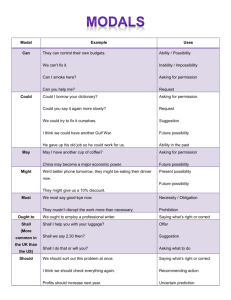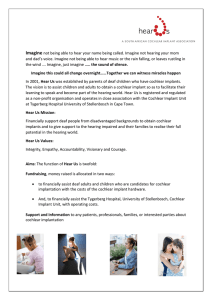Classroom Adaptations Checklist for Hearing Loss
advertisement
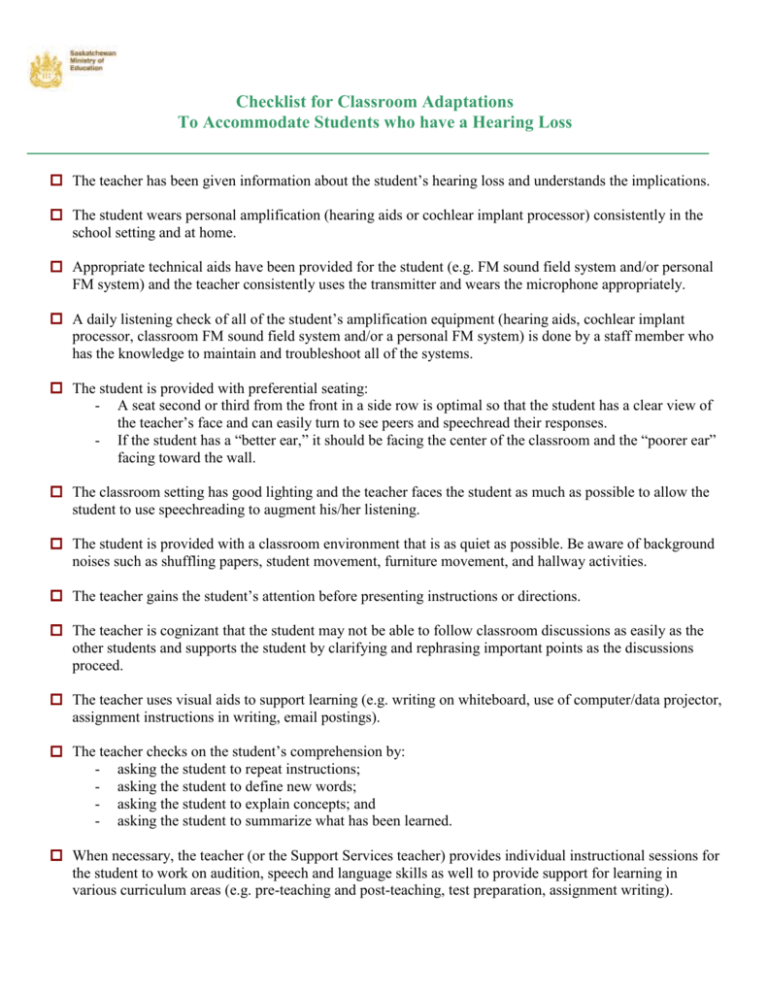
Checklist for Classroom Adaptations To Accommodate Students who have a Hearing Loss ____________________________________________________________________ The teacher has been given information about the student’s hearing loss and understands the implications. The student wears personal amplification (hearing aids or cochlear implant processor) consistently in the school setting and at home. Appropriate technical aids have been provided for the student (e.g. FM sound field system and/or personal FM system) and the teacher consistently uses the transmitter and wears the microphone appropriately. A daily listening check of all of the student’s amplification equipment (hearing aids, cochlear implant processor, classroom FM sound field system and/or a personal FM system) is done by a staff member who has the knowledge to maintain and troubleshoot all of the systems. The student is provided with preferential seating: - A seat second or third from the front in a side row is optimal so that the student has a clear view of the teacher’s face and can easily turn to see peers and speechread their responses. - If the student has a “better ear,” it should be facing the center of the classroom and the “poorer ear” facing toward the wall. The classroom setting has good lighting and the teacher faces the student as much as possible to allow the student to use speechreading to augment his/her listening. The student is provided with a classroom environment that is as quiet as possible. Be aware of background noises such as shuffling papers, student movement, furniture movement, and hallway activities. The teacher gains the student’s attention before presenting instructions or directions. The teacher is cognizant that the student may not be able to follow classroom discussions as easily as the other students and supports the student by clarifying and rephrasing important points as the discussions proceed. The teacher uses visual aids to support learning (e.g. writing on whiteboard, use of computer/data projector, assignment instructions in writing, email postings). The teacher checks on the student’s comprehension by: - asking the student to repeat instructions; - asking the student to define new words; - asking the student to explain concepts; and - asking the student to summarize what has been learned. When necessary, the teacher (or the Support Services teacher) provides individual instructional sessions for the student to work on audition, speech and language skills as well to provide support for learning in various curriculum areas (e.g. pre-teaching and post-teaching, test preparation, assignment writing).

